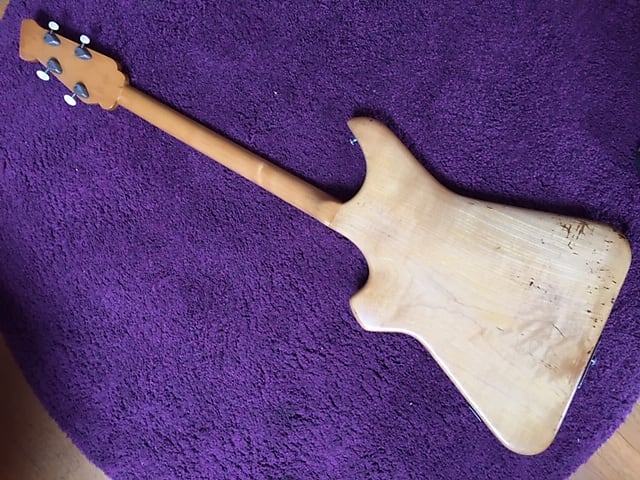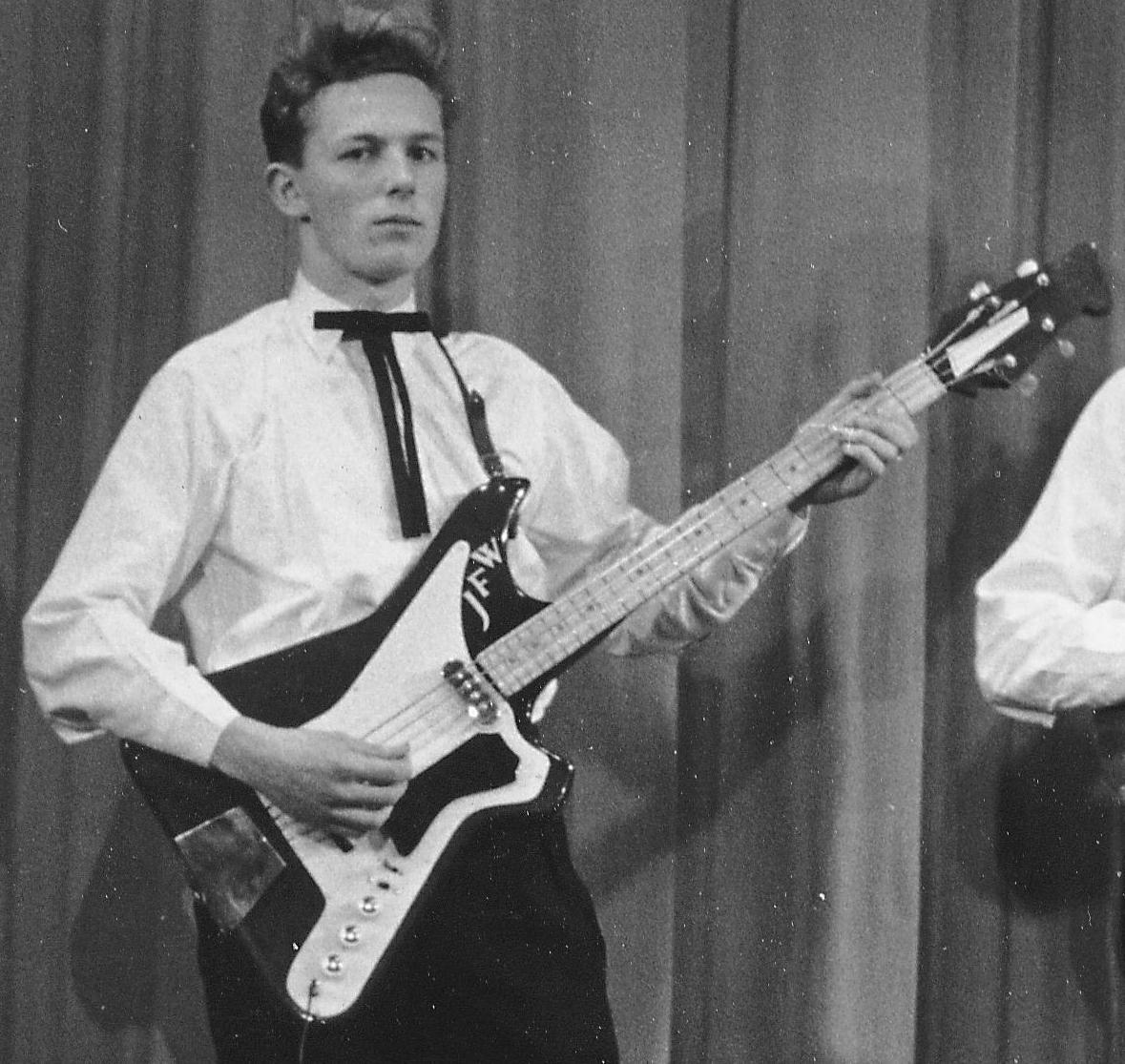REFERENCE & RESOURCE PAGES:
FENTON-WEILL
STREAMLINE - DE LUXE - TUXMASTER - AMERICAN RANGE
TWISTER RANGE - DUALMASTER - SPECTRATONE - FIBRATONE
HOHNER - BELL - DALLAS - ADVERTS
BURNS-WEILL (1959) - OTHER BURNS & RELATED (1958-1992)
Streamline Models, 1960-1961
Also known colloquially as the "Martian Cricket Bat", the "Solid Body Electronic Guitar" was the first model advertised by Fenton-Weill in 1960.
This was a continuation of the shortlived Burns-Weill Roy Plummer Streamline Deluxe RP1G and RP1B from 1959. It is unclear why the February 1960 advert ran under the BURNS-WEILL brand name when Jim Burns had already 'gone solo' two months previously, with his own advert for rhe Burns Artistes Model which ran in December 1959. In March 1960 the same advert appeared with the name changed to FENTON-WEILL, and with BESSON on board for distribution
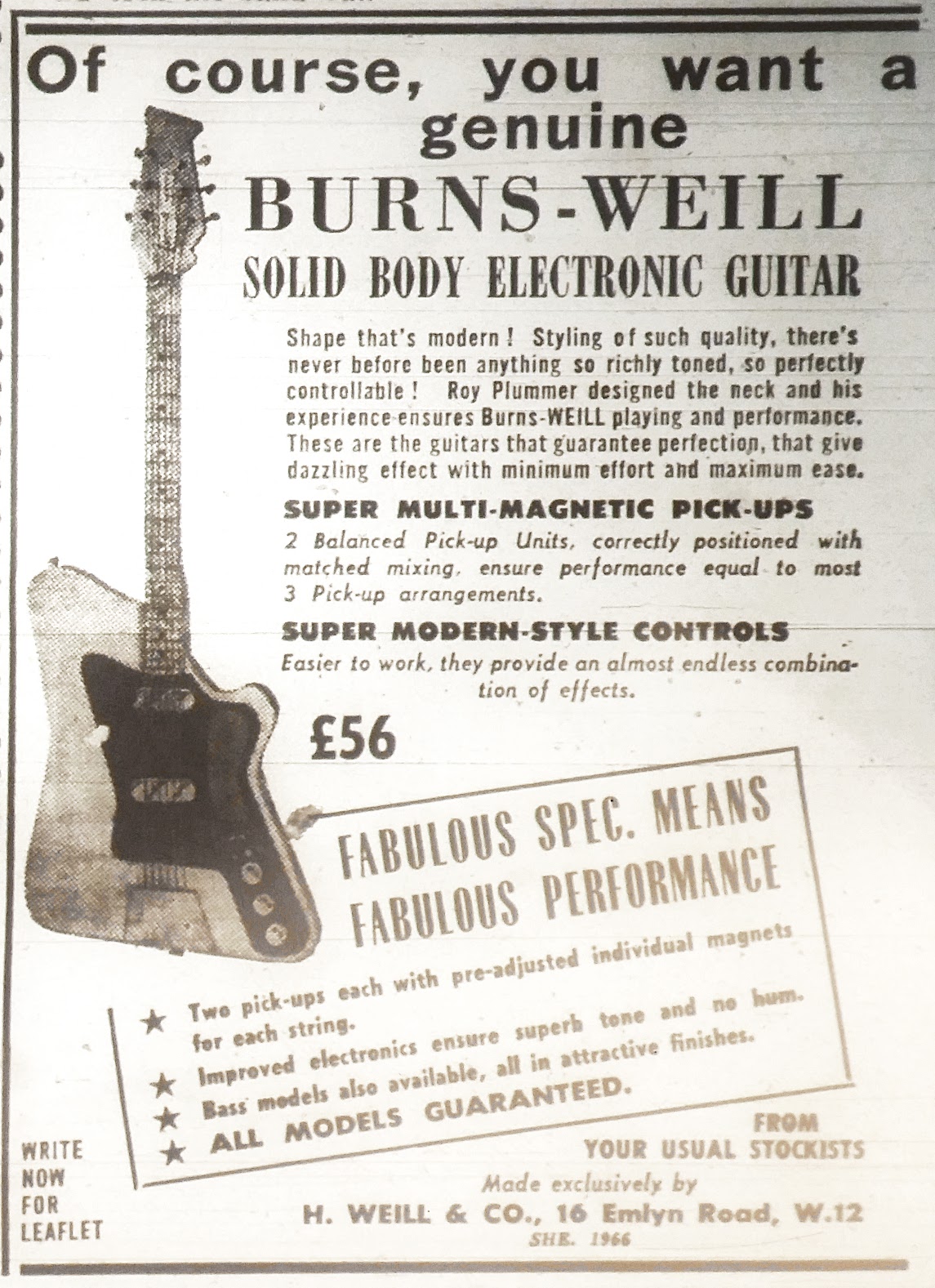
Melody Maker 20th Feb 1960
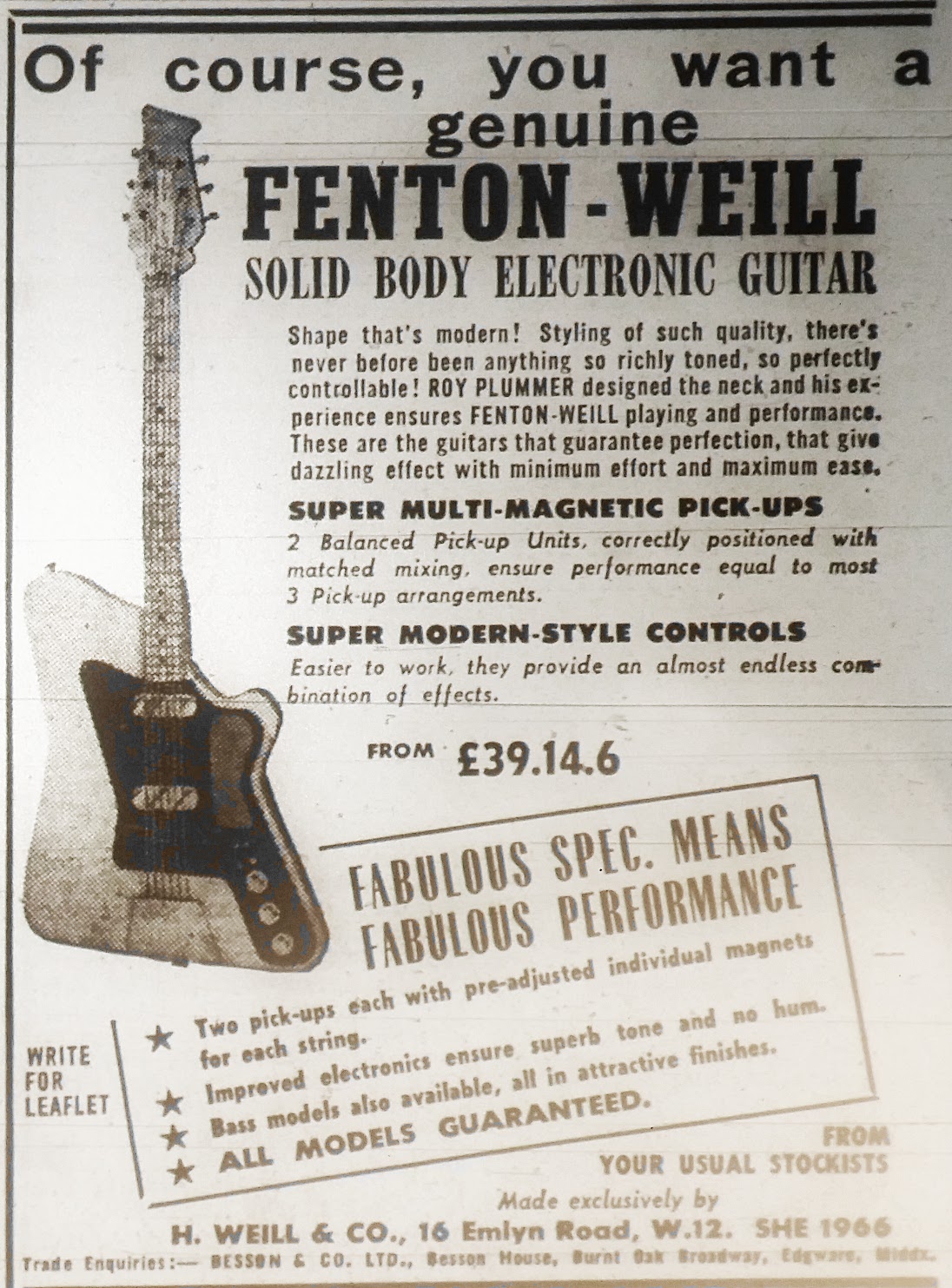
Melody Maker 19th March 1960
"The various Burns-Weill models continued to be advertised by dealers throughout 1959, until the first Ormston Burns ad appeared in the Dec 19 MM, with the ‘new’ Burns solid then being listed during early 1960. As you say, that anachronistic Burns-Weill ad in the Feb 20 1960 issue seems odd, but I really don’t think Henry was thinking about such niceties as ‘smoothing the transition’. After the very acrimonious parting with Jim, he simply wouldn’t countenance including his competitor’s name, so instead I would say this ad might’ve been scheduled before the split and Henry simply forgot about it in the aftermath of Jim’s sudden departure, or else the mistake concerning the now obsolete brandname wasn’t noticed until it was too late. My reasoning is based on the fact that this very same ad appeared a month afterwards, identical except for the appropriate name change to Fenton-Weill, which also provided speedy public confirmation of Henry’s decision to soldier on alone." - Paul Day
The examples pictured in the first FENTON WEILL leaflet still showed BURNS WEILL LONDON headstock badges:

Some transitional examples used Burns-Weill badges with 'Burns' part clipped off:
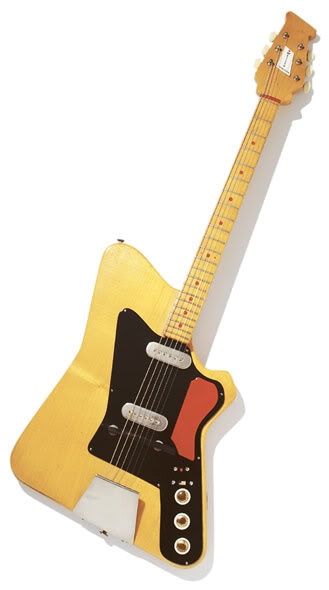
1960 RP1G "Streamline Super"
This model was a re-styled version of the earlier Burns-Weill Super Streamline RP1G.
The shape of the body's bass horn changed first, followed by variation to the secondary pickguard shape.
Around 1961 the jack socket moves from the side to the pickguard.
The headstock shape was revised in late 1961 to a six-in-line style, as the RP1G was Incorporated into the American Range as the 'Twinmaster'
The short-scale RP2G "Streamline De Luxe" was mentioned as available (but not pictured) in Besson adverts dated March 1961:
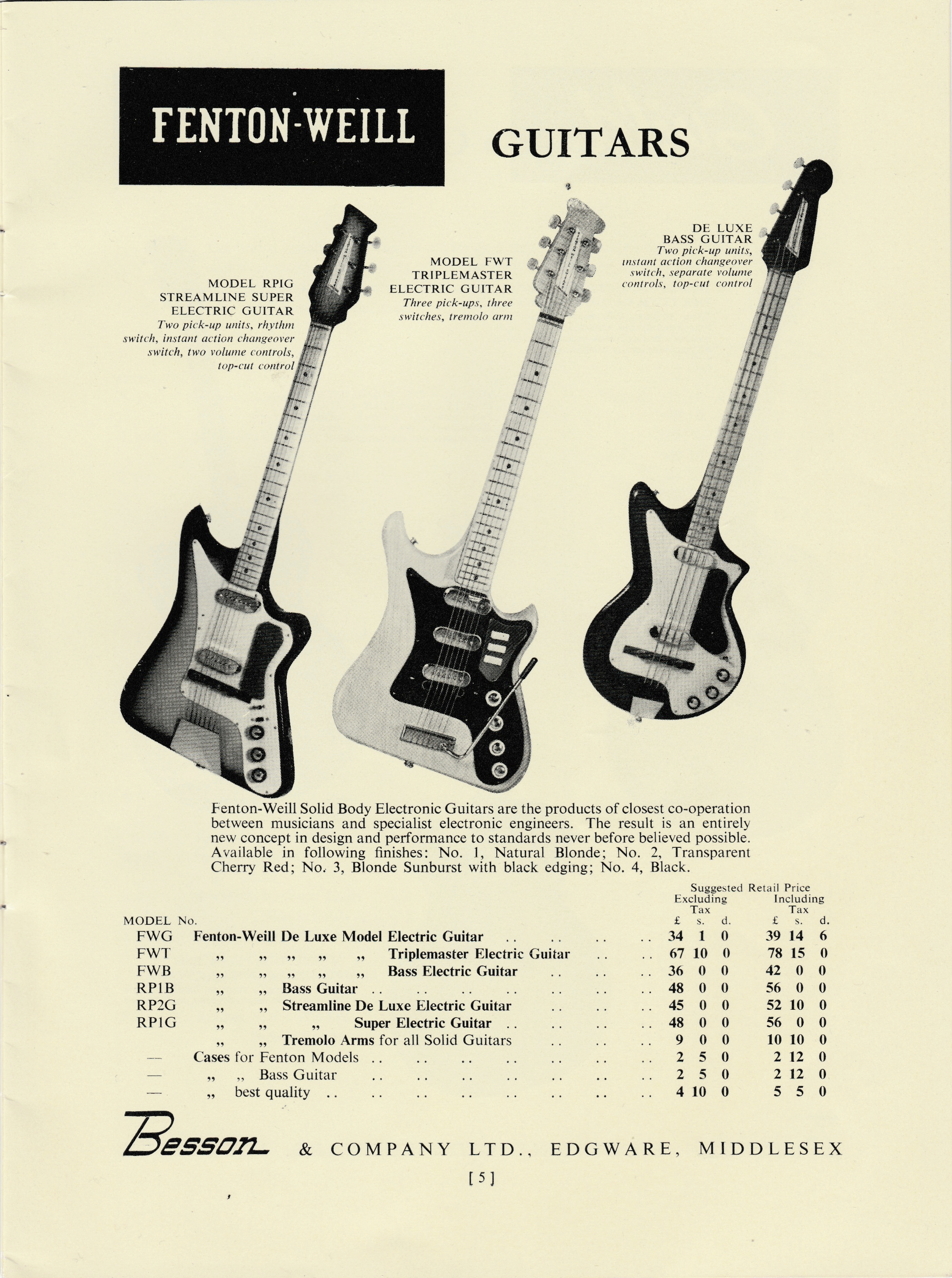
Circa mid-1960 RP1G
Earlier 'more-rectangular' red pickguard shape, plus early tremolo style as seen on 1960-61 Deluxes with no surrounding plate.
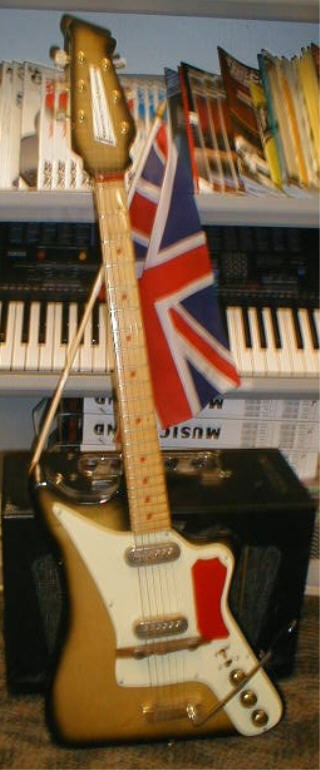
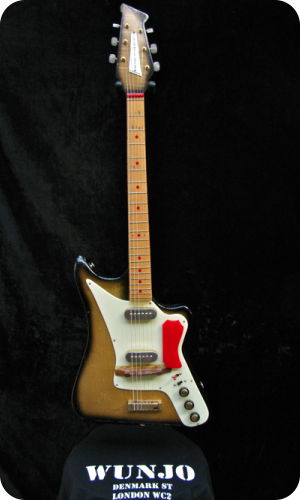
From irregularities in the application of the sunburst finish, this appears to be the instrument pictured in the c.1961 Fenton Weill catalogue below
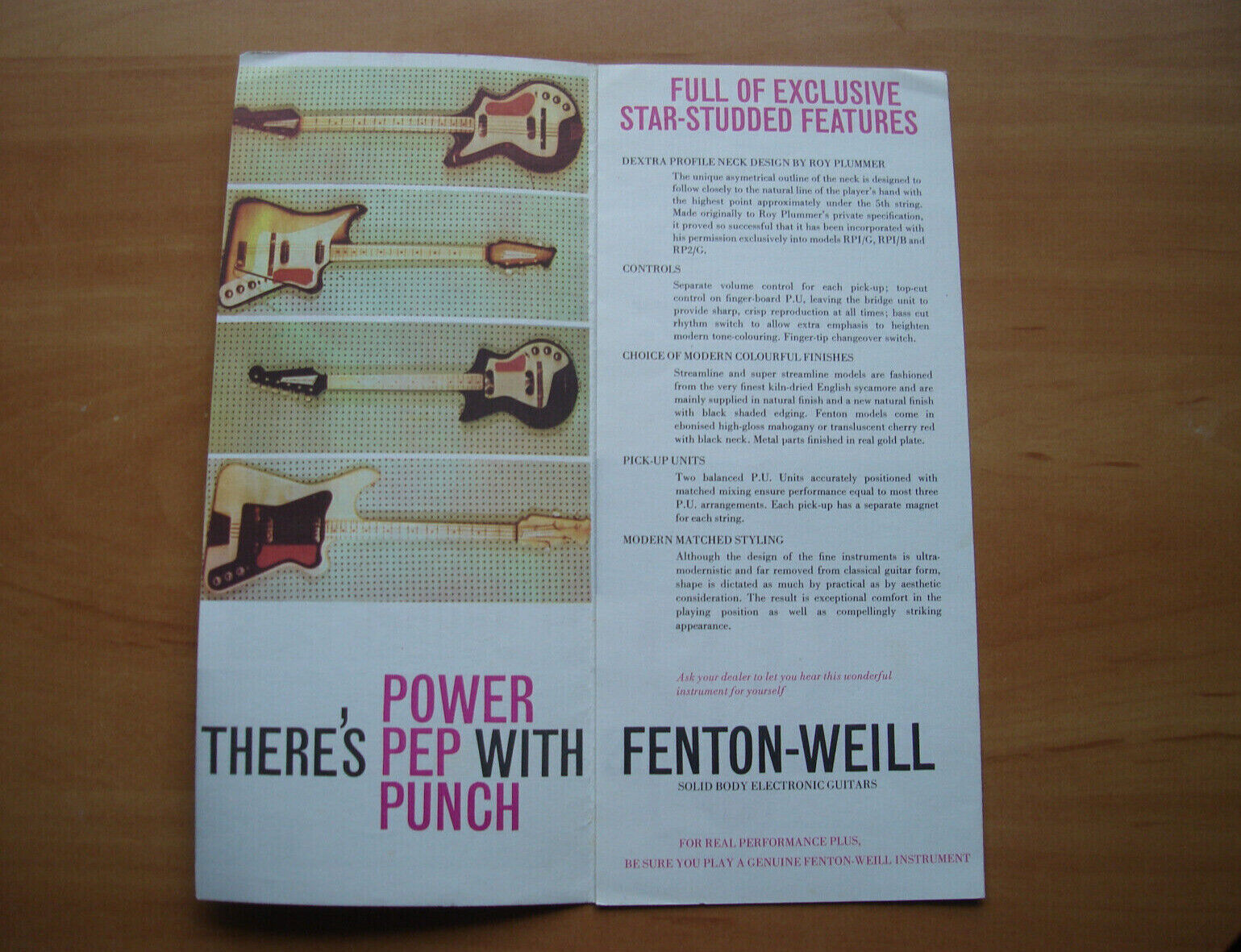
Circa mid-1960 RP1G
Secondary plate has become more rounded. Jack socket still side-mounted. Only 21 frets?
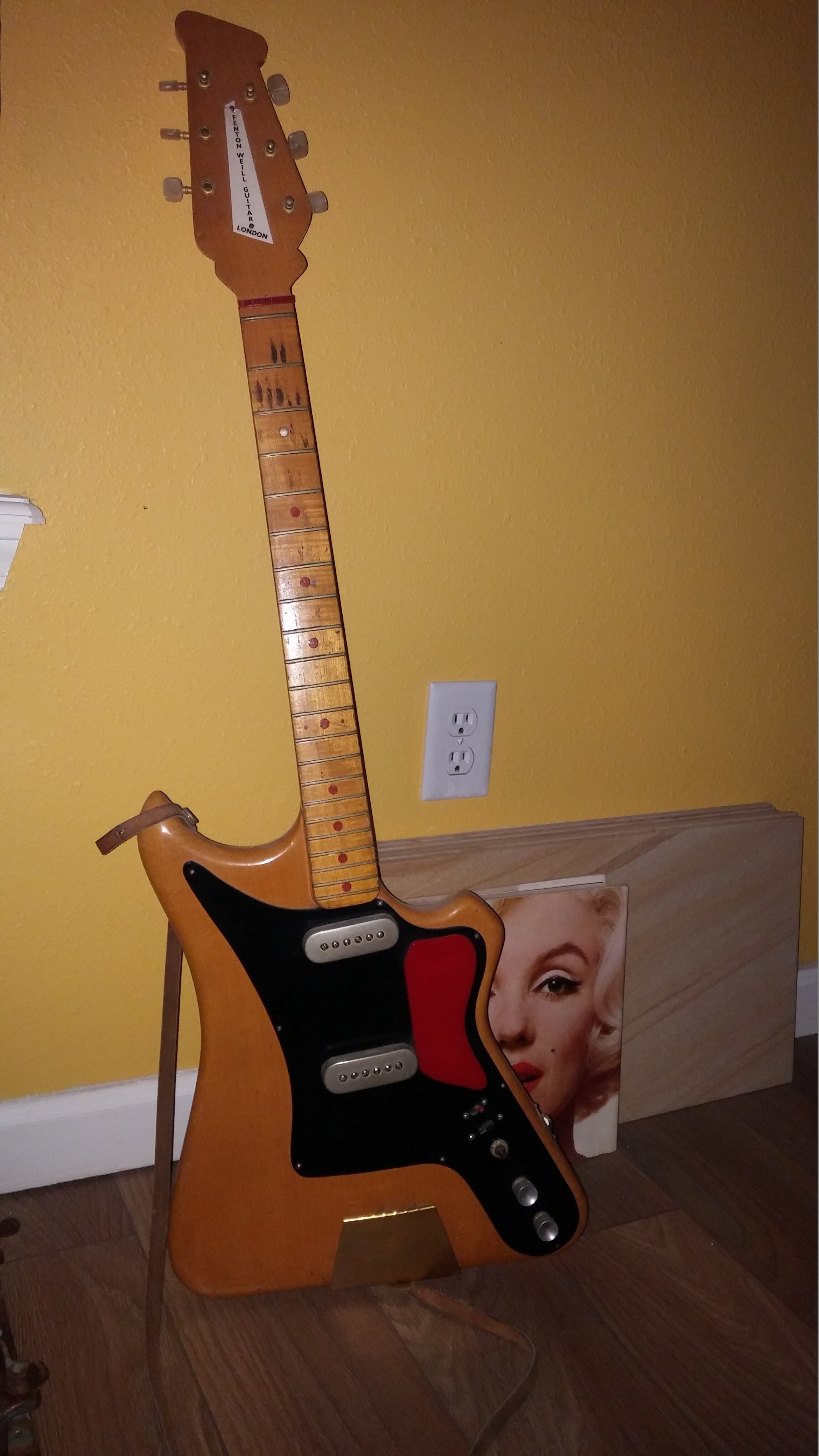
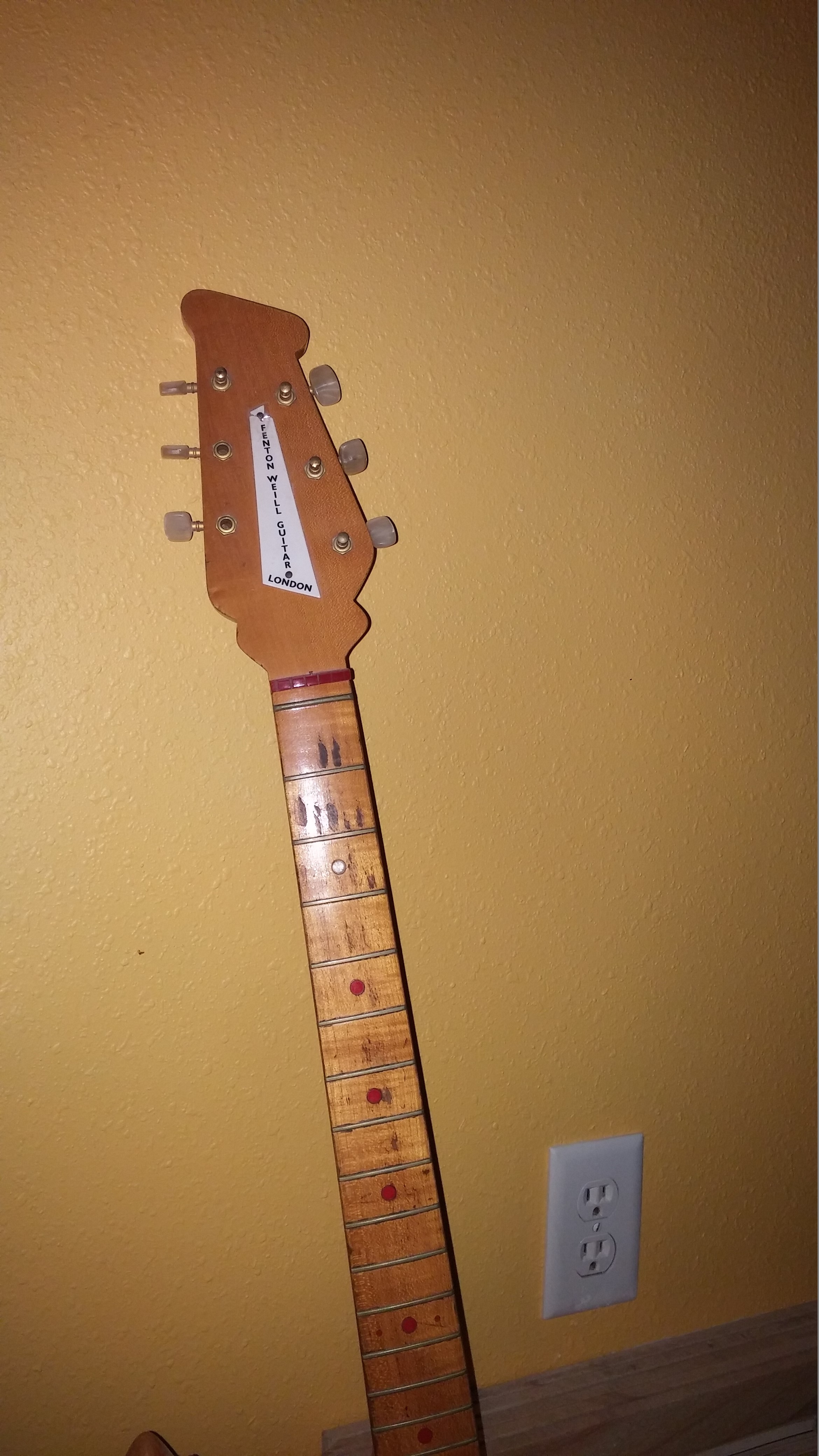
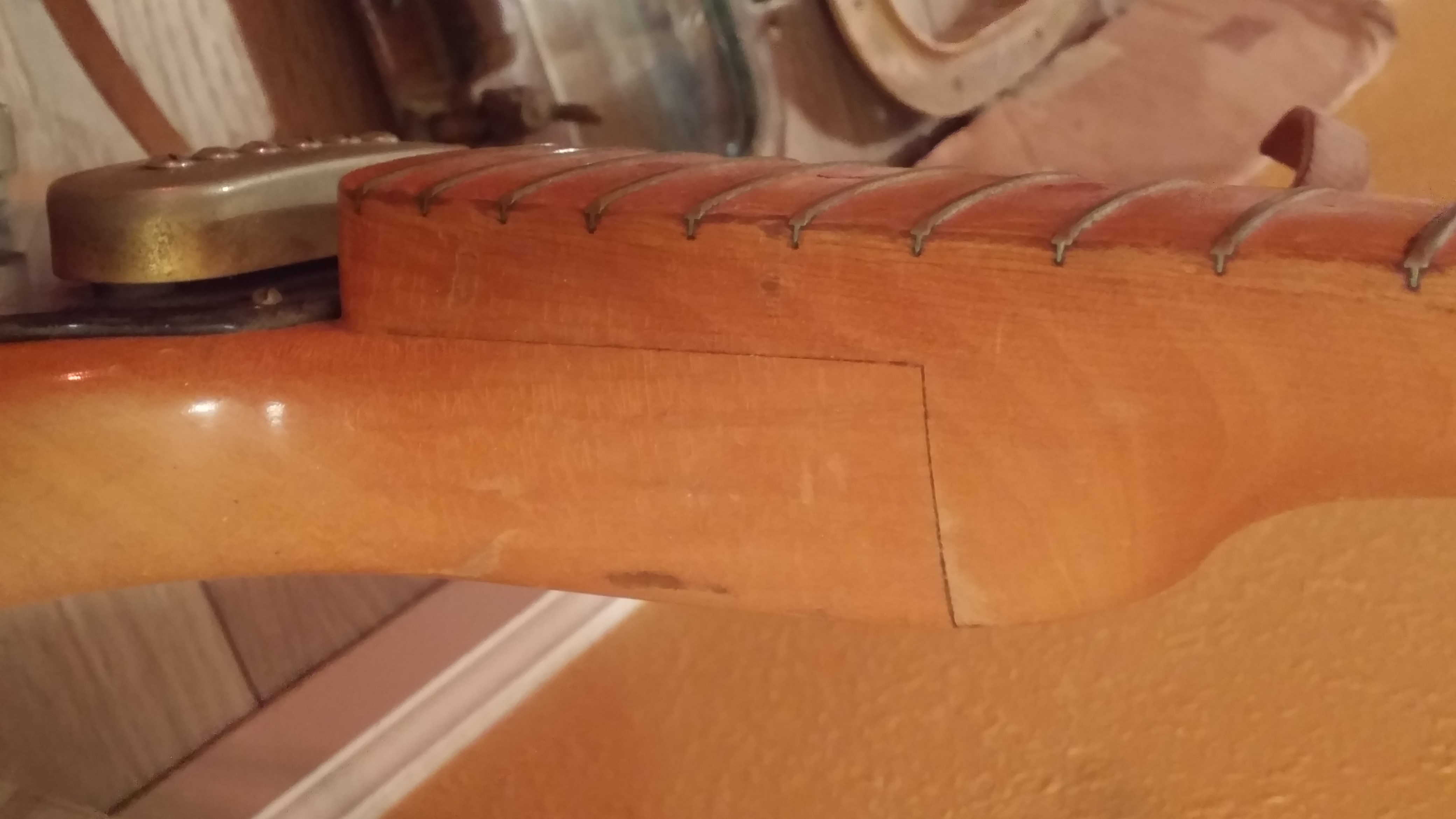
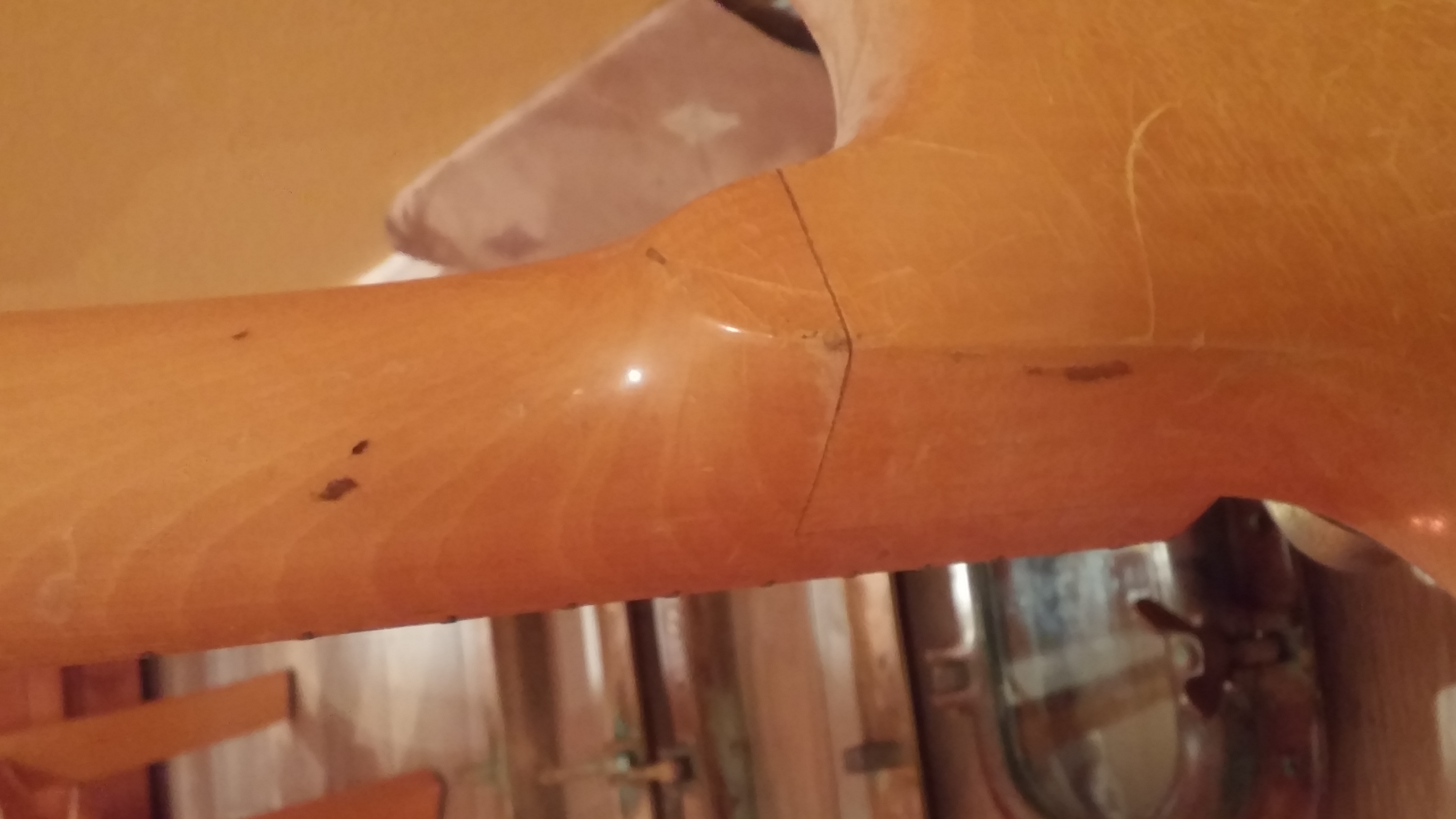
circa late 1960 RP1G "Streamline Super"
This immaculate example features no serial number, but does have an early Symmetrical Vibrato coverplate, also seen on early Amazons from circa May 1961, suggesting it may be from early 1961
Note: soft-heeled neck joint, and rounded headstock transition. No pickup selector switch, early 'T' cross-section strap buttons. Jack socket still on side of body.
Headstock badge outline reversed, points the other way!
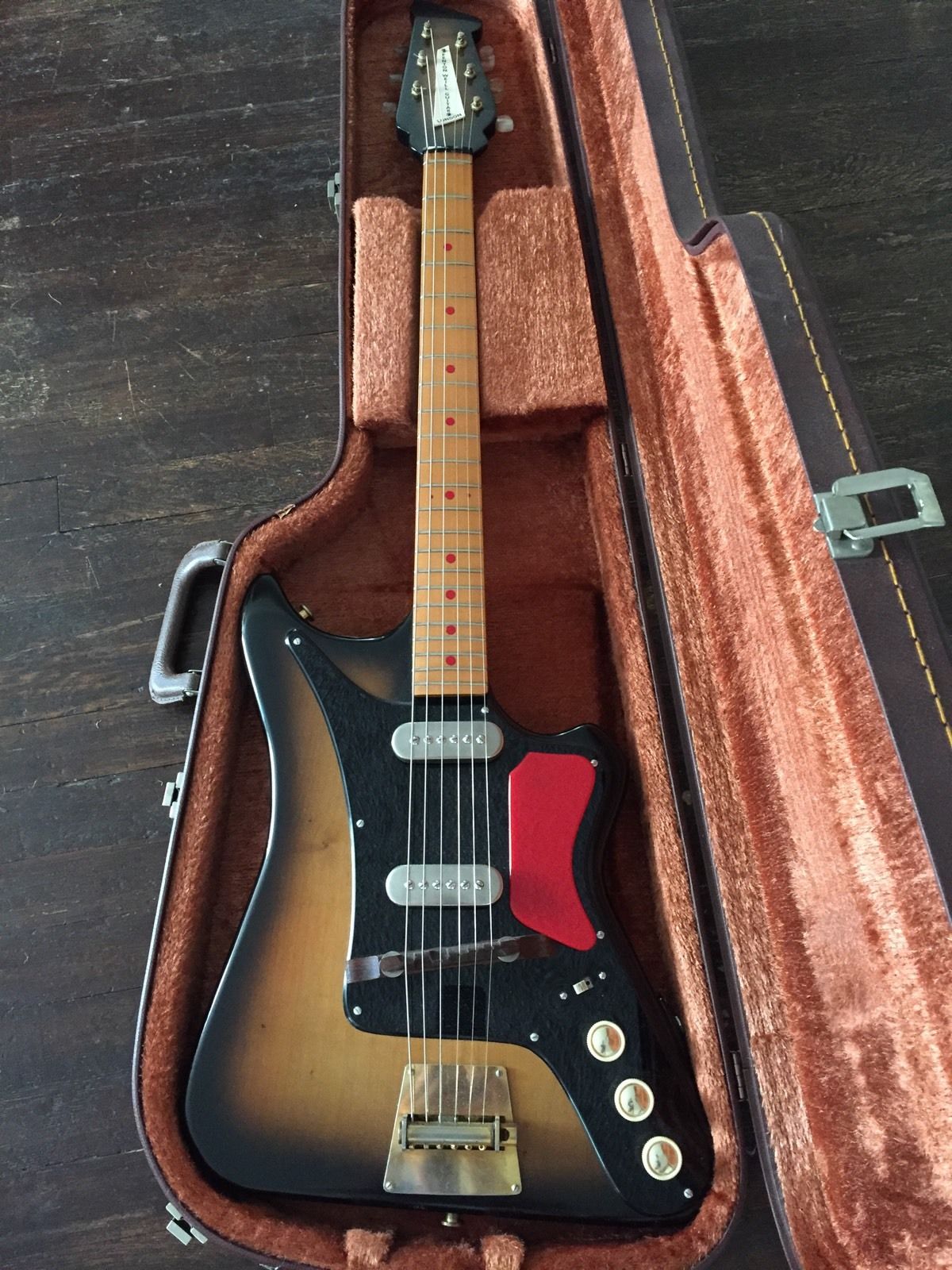
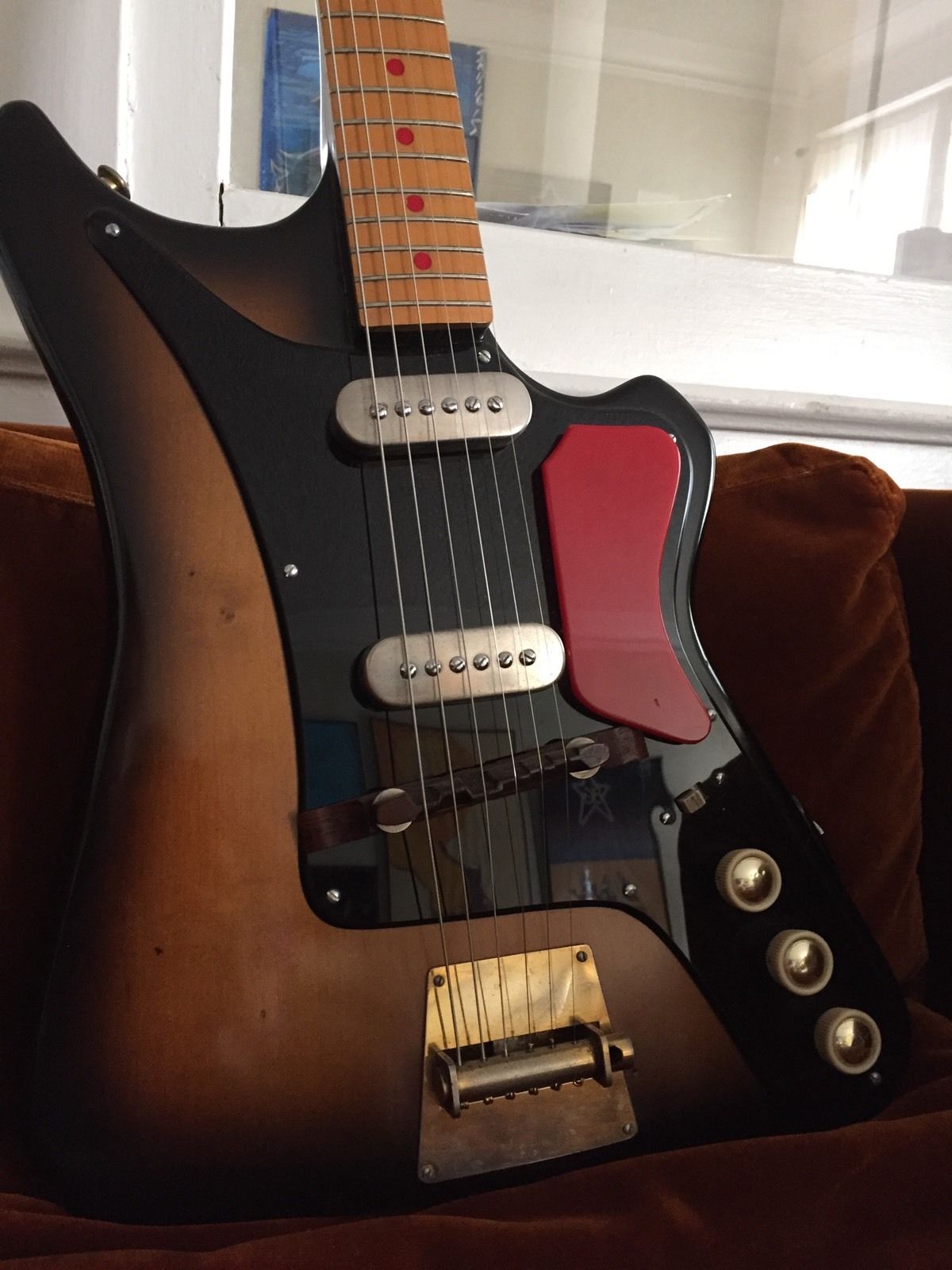
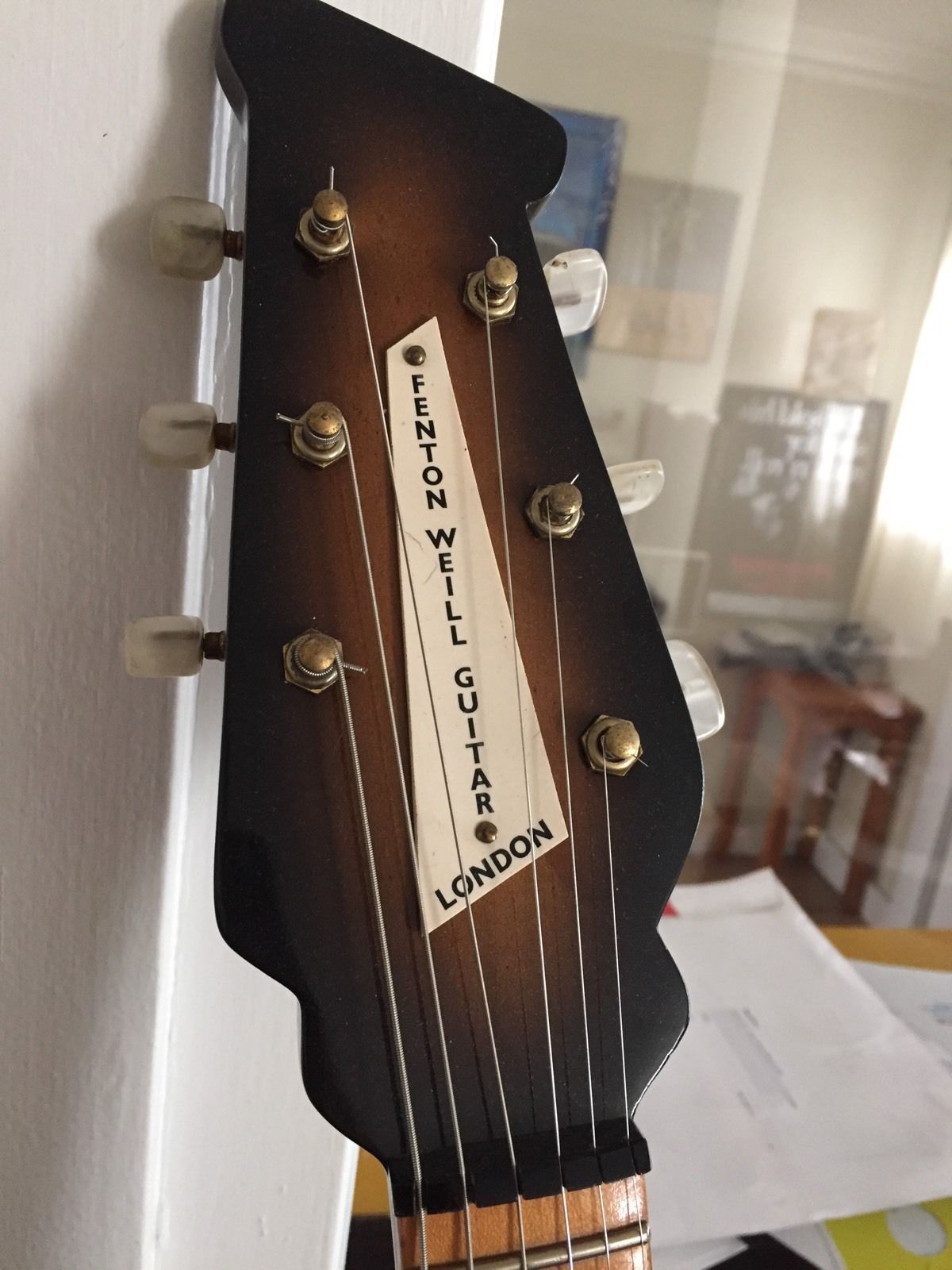
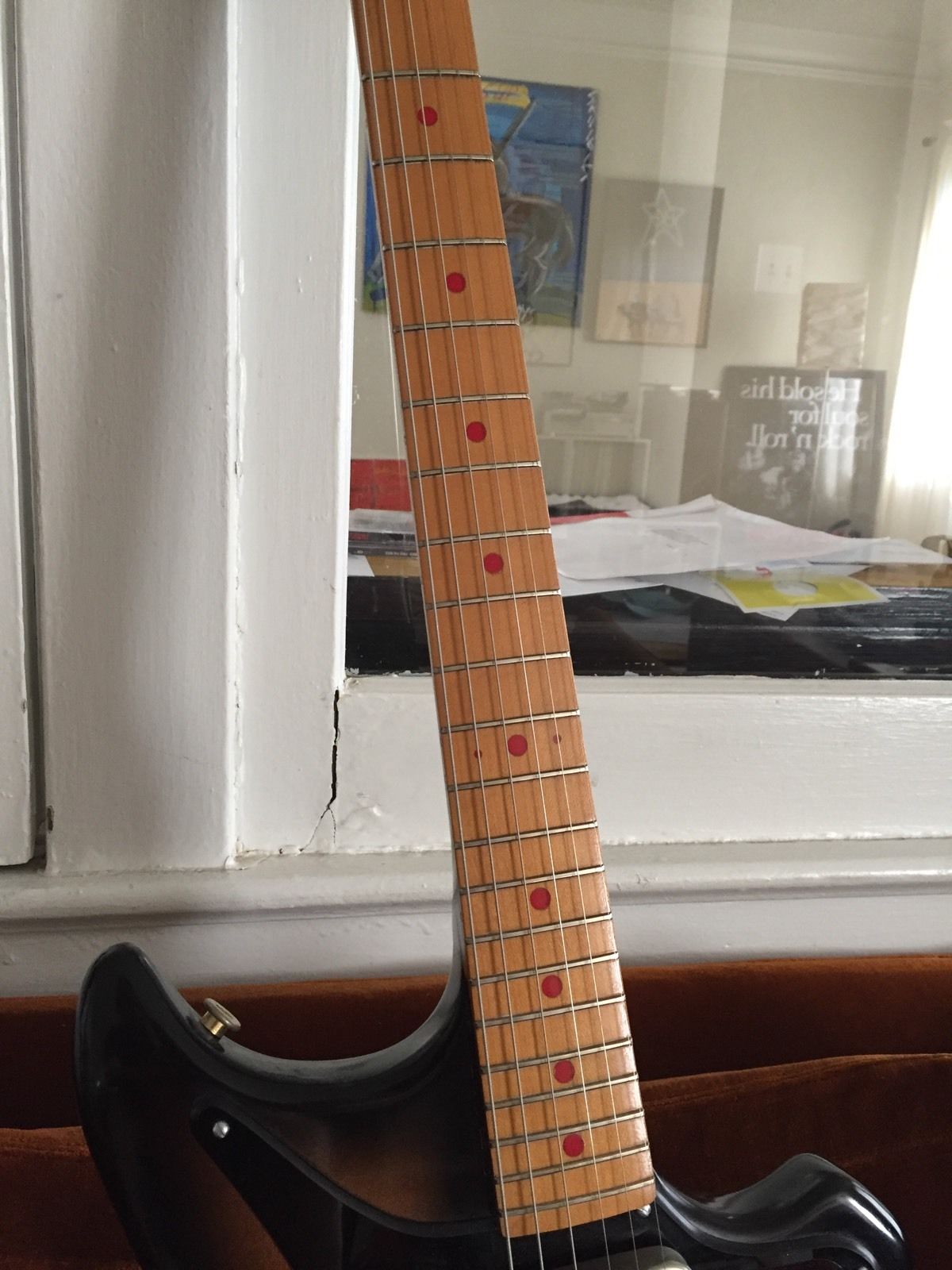
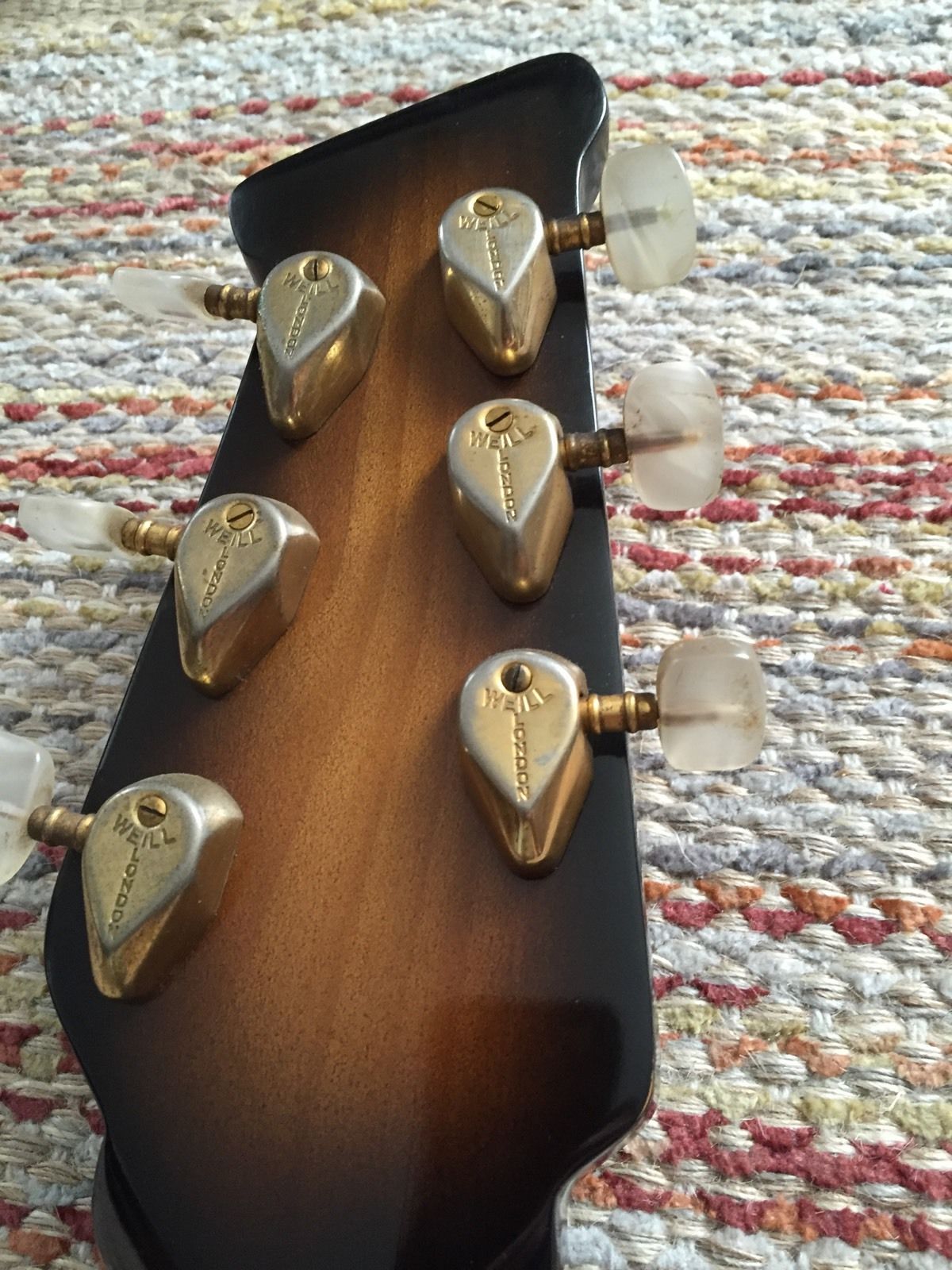
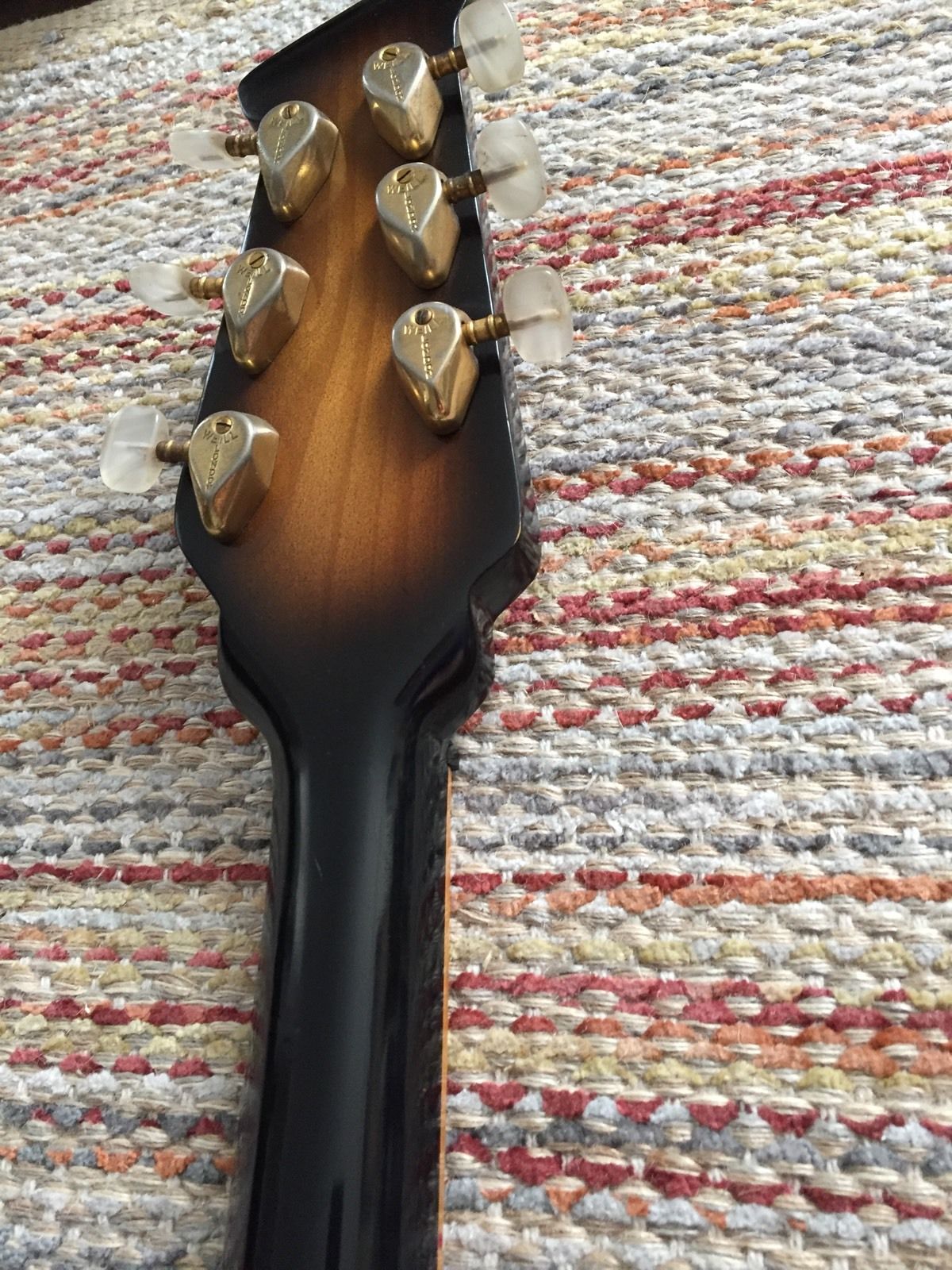
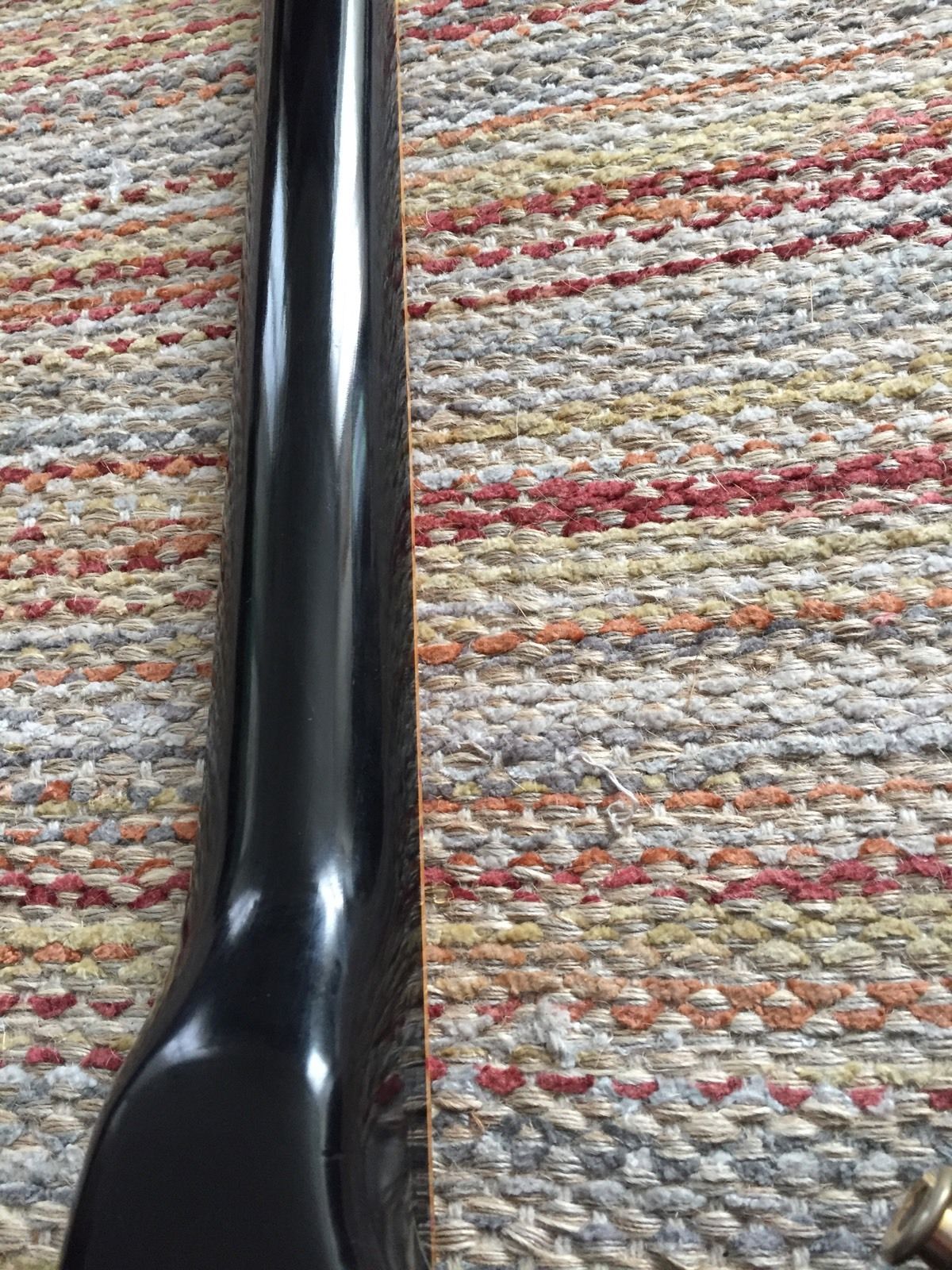
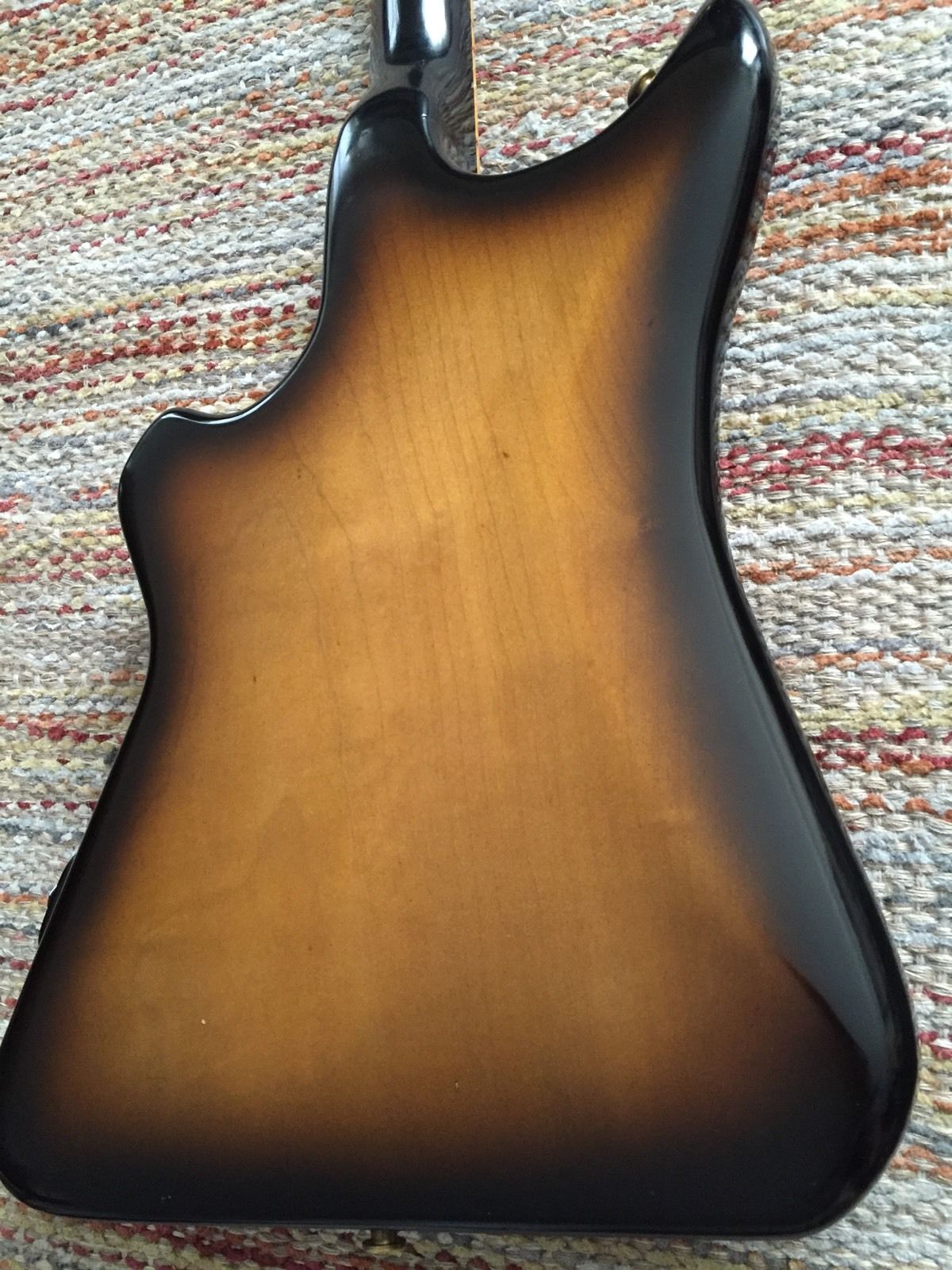
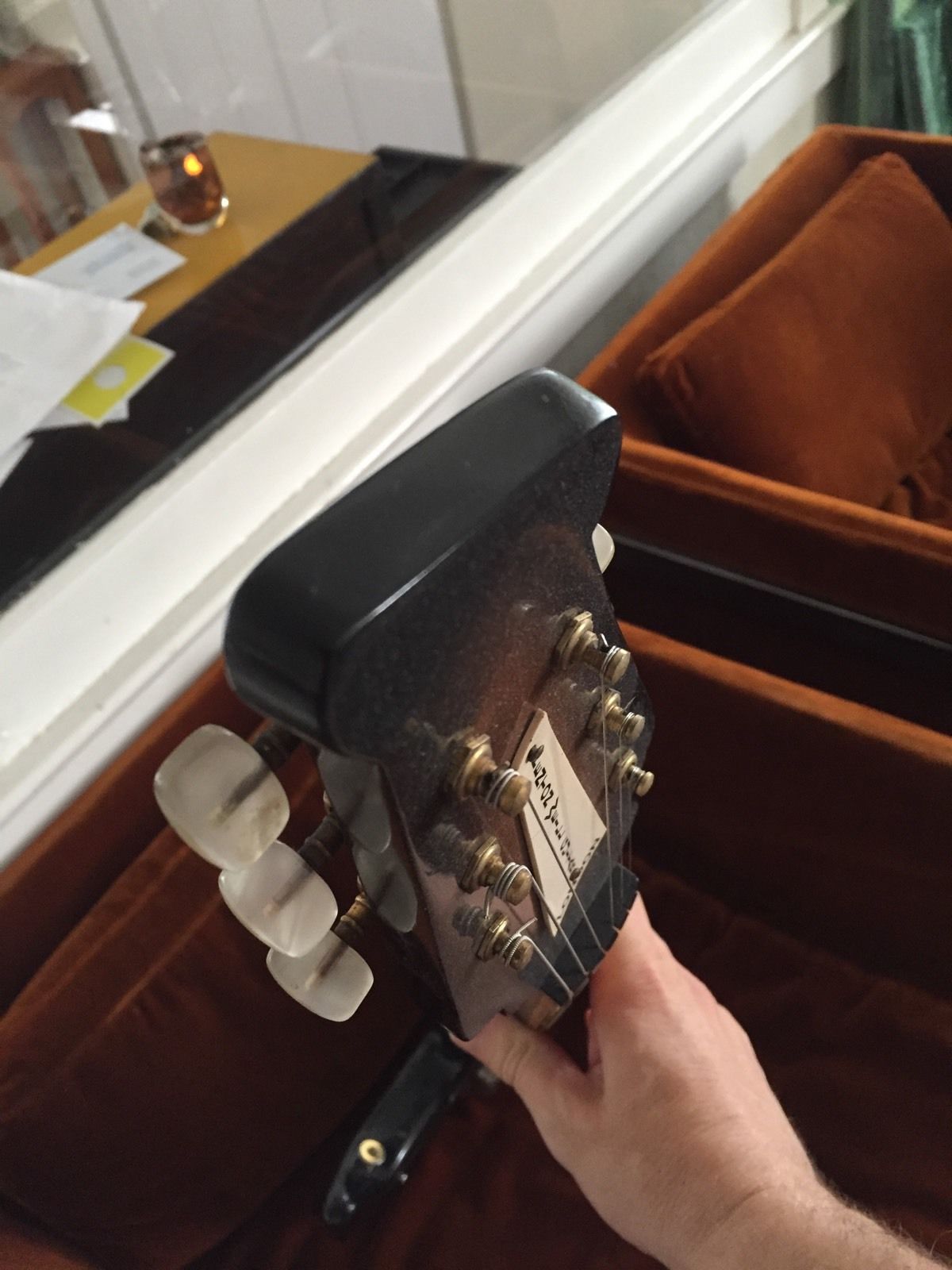
Circa mid-1961 RP1G
Non-vibrato fixed tailpiece example. Headstock badge outline reversed, points the other way!
Soft-heeled neck-joint, coupled with pickguard-mounted jack socket suggests that this guitar dates from mid-late 1961
Note: This example was restored and refinished, but retains original shaped case and Letraset control legends!
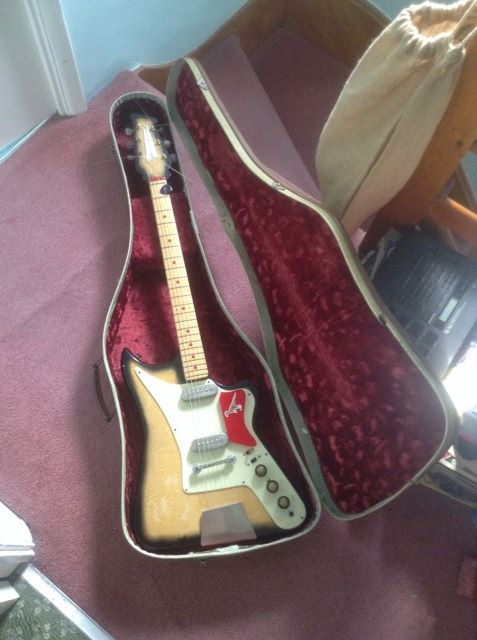
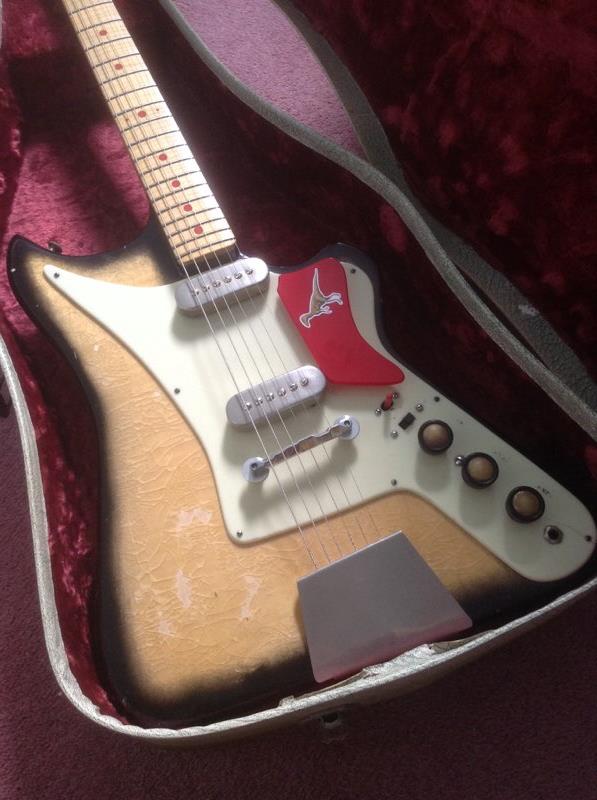
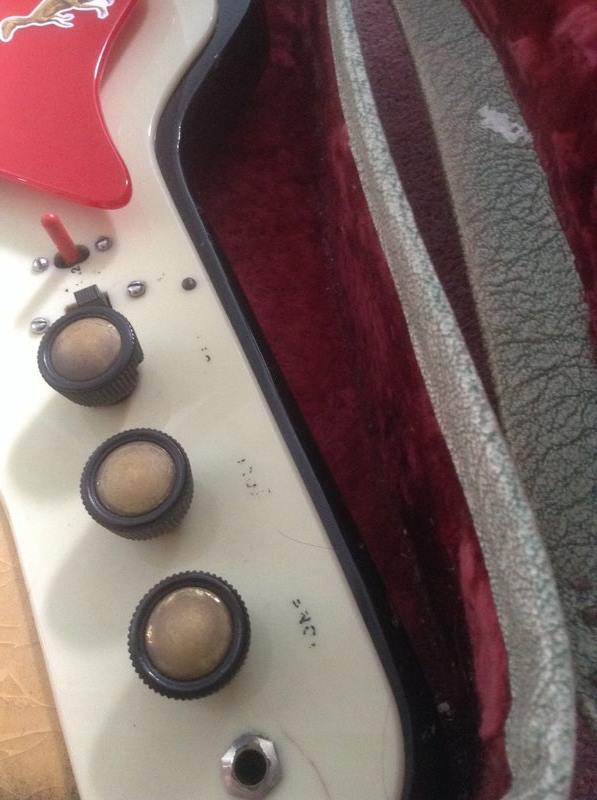
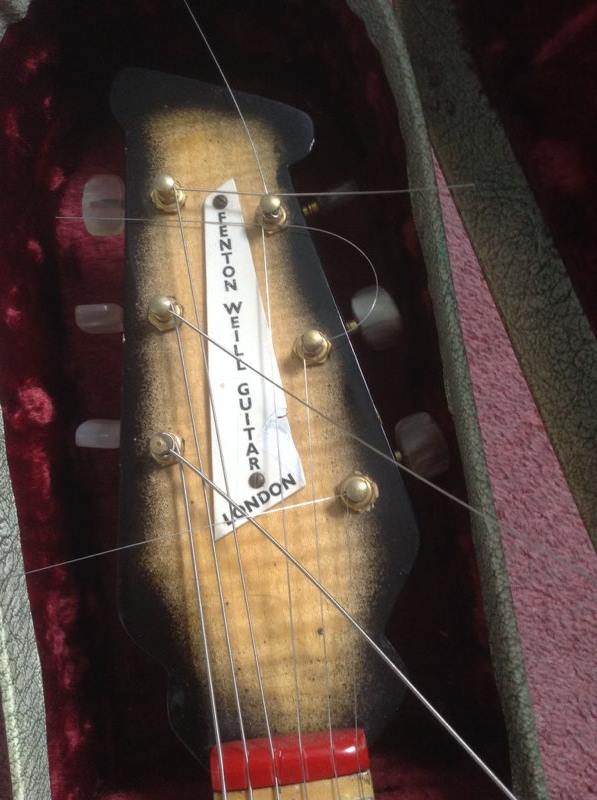
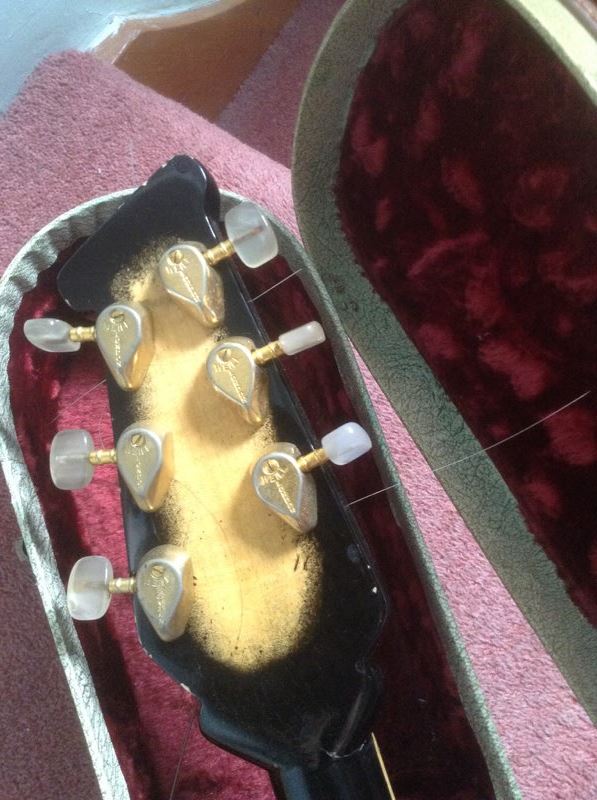
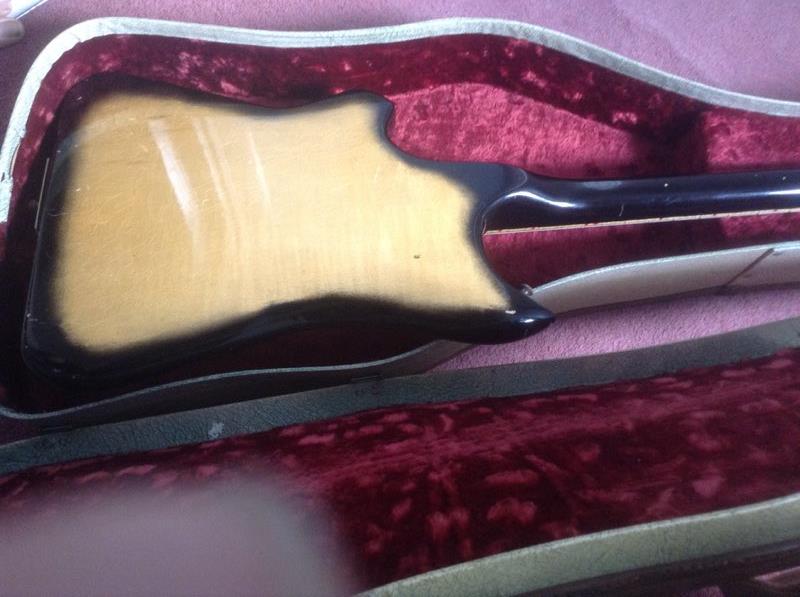
1960 RP2G Streamline Deluxe
Lumpy headstock/neck transition.
Headstock badge outline reversed, points the other way!



1960 RP1B Contrabass
This Contrabass may be an earlier Burns Weill example. The body has been cut down.
It features the earler 'more squared' style of red-pickguard, and large closed-back pear-shaped Van Gent bass tuners with white buttons, which appear to be original.
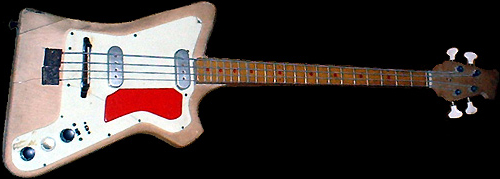

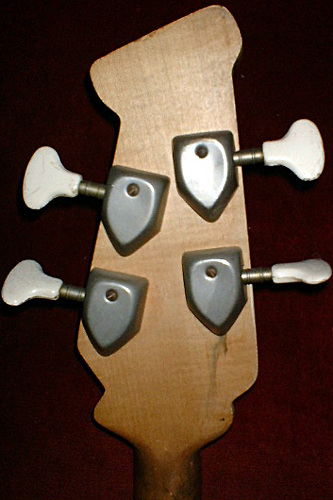
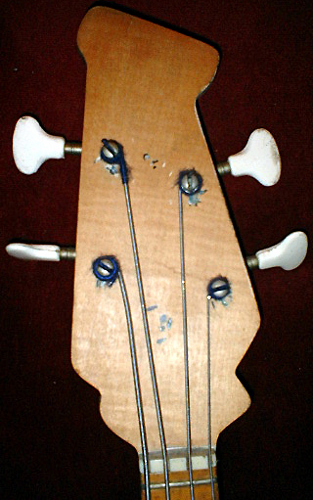
The Contrabass was soon refined with changes to the shape of the body and pickguard in the bass-horn area, as in the following photo of Jeff White in 1961/62. Also, the jack socket position was moved from the side of the body to the pickguard.
1960 RP1B Contrabass
While the headstock badge says Burns-Weill, and the lumpy headstock transition at the nut does suggest a Burns-made instrument, the more refined shape of the body, pickguard, secondary pickguard, and enclosed Van Gent tuner units are all of the style seen on post-1960 Fenton-Weill instruments. The jack socket being mounted to the pickguard is another indication of this being a later example. When photographed for the Burns Story book, it had a red secondary pickguard. The headstock nameplate is held on by screws, instead of escutcheon pins like the original, so I suspect the nameplate is a later reproduction, and should really say Fenton Weill.

